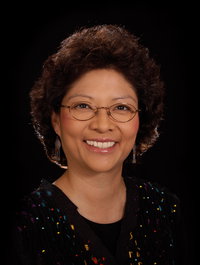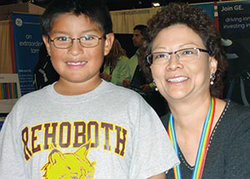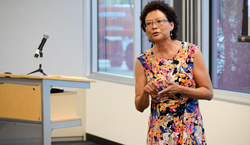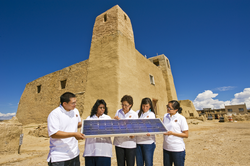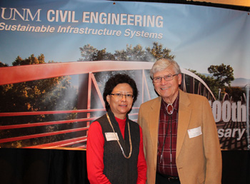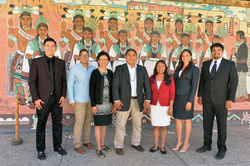Sandra Begay-Campell
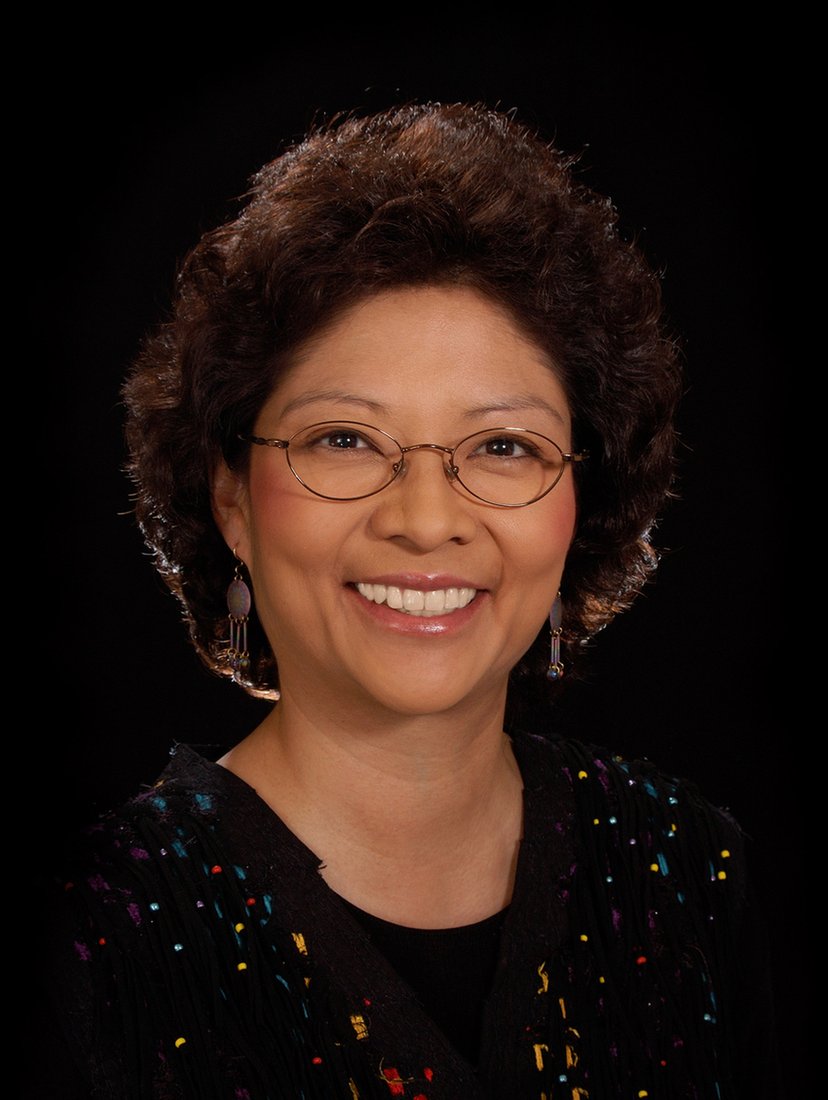
Sandra Begay-Campell
Early life
Family
Both of Sandra’s parents were role models to her throughout her life.
Her father was a former Vice President, Speaker of the Navajo Nation Council, and Council member for over 30 years. He advised Sandra to help the Navajo Nation as well as other native people. Her mother was a full-time nurse for the Indian Health Service, and she had a lasting influence on Sandra's life both as a mentor and a teacher of Navajo tradition and family values. "Both my mom and dad expected me and my sister to go to college," Sandra said, acknowledging her parents' role in her education. "It was not ever a question, we just knew we were going to college."
Childhood
Sandra grew up in a modern setting but spent many weekends at her grandmother’s traditional hooghan.
As a child, she attended Church Rock Chapter meetings every week and listened to community members talk about their concerns.
In an interview she gave the Navajo Times, she reminisced about those meetings: "I was [there] every week. It brought me an understanding of how to speak desires through the chapter and move them to the Navajo Nation Council."
Education
Early Years
Her early education years were years of discovery, years when she understood what lied at the intersection of her interests, her strengths and what added value to the world around her.
In sixth grade, Sandra became interested in Architecture, but she soon realized that she was not a talented artist. However, she found that she enjoyed math and solving problems. Sandra fondly remembers a decisive event in choosing her future academic and professional career: “I grew up only a few hours’ drive from Albuquerque, New Mexico, and it was an exciting day when one of my grandmothers received electricity for the first time. We made a special visit that night, just to see her shiny new porch light. This basic need for infrastructure sparked my interest in Engineering." During her high school junior year, Sandra attended a “Minority Introduction to Engineering Program” and discovered that civil engineers often worked with architects on a variety of interesting public projects.
Higher Education
However, the path to becoming an engineer proved treacherous, as she later found out.
After graduation from Rehoboth Christian High School, she enrolled in a college in Grand Rapids, Mich., for one semester.
"It was major culture shock," she recognized in an interview. "I needed to come home and finish my education. [...] I wasn't college-ready for engineering. [...] I learned about failure." Begay-Campbell returned to Gallup and attended classes at the University of New Mexico-Gallup, a school she described as "ideal" because the classes were small and she could live at home throughout her studies. Sandra added that it helped to get to know her instructors' teaching styles and how they graded.
She continued her undergraduate studies by moving to the main campus of the University of New Mexico, in Albuquerque, and became involved in the American Indian Science and Engineering Society (ASIES). She was the first woman to serve for three years, as chairperson of the Board and executive director of this national non-profit organization Continuing the ASIES mission of increasing the number of Native American students enrolled in university science and engineering programs, Sandra reorganized the non-profit organization by adding new programs and scholarships. It took her a long six and a half years, working part-time to support herself, to receive a Bachelor degree in Civil Engineering in 1987.
In 1989, Sandra's life took a new turn, for the better.
Sandra was accepted to Stanford University and got full funding from the National Consortium for Graduate Degrees for Minorities in Engineering and Science. She graduated from the prestigious Stanford University with a Master of Science degree in 1991, and soon after, she decided to put her newly acquired expertise to use. Following the 1989 California bay-area earthquake, Sandra made it a goal to use the best available knowledge to design earthquake resistant structures. Recalling her mother's teachings, she was aware of the Navajo world view that humans cannot control Mother Nature and that they do not have to accept the consequences from natural phenomena.
Career
Since then, Sandra has become involved as a principal member of the technical staff at Sandia National Laboratories (SNL). SNL’s primary role is to provide technical assistance in support of Indian energy initiatives, and to conduct renewable energy resource and technology options assessments. Sandra's work is helping accelerate a sluggish development in the tribal reservations of the United States, especially in the Navajo tribes. Reservations were not included in the industrial movements within United States. In 1928, the Meriam Report"noted that reservation life was plagued by endemic poverty, ill health, poor education, and social and economic dependency." Things have not advanced in the right direction for the past century: in 2005, the Navajo Institute for Social Justice reported that "48 % of Navajo homes lacked running water and indoor plumbing, that 44% of Navajo homes had not electricity and or refrigeration, and that 68% of Navajo children lived in poverty."
However, Sandra and her team have brought solutions to the vicious circle of economic hardship by harnessing the limitless possibilities of renewable energies to increase access to electricity and basic utilities.
Presently, she manages the Tribal Energy Program providing technical assistance to tribes in the Southwest, analyzing renewable energy program development plans.
Many times, Sandra needs to listen to the voices of the local population to understand whether they want to be integrated in the new economy or, instead, observe the traditional lifestyle.
Hence, Sandra's mission extends beyond using her expertise to uplift people's standards of living: it involves listening to the needs of a community as they formulate them.
This is a mission Sandra says is “more than a job - it’s a way of life.”
Apart from her role in the Sandia National Laboratories, she has served as Director on the Board of The University of New Mexico.
She has also served as a Director of Presbyterian Healthcare Services, Inc.
Advocacy and Mentorship
Throughout her career, Sandra has ensured that her work in the service of community will be continued by the new generation of Native Americans (US). For example, Ms. Campbell manages the Indian Energy Program’s student internships which welcomes Native American college upperclassmen and graduate students to help support Indian Energy Program efforts through participation in technical projects. "Interns join a cross-disciplinary team at SNL and interact with renewable energy staff, Native American Tribes, and the Lab’s American Indian Outreach Committee to execute the program’s activities."
She has advocated for changes within public education and for the rights of rural communities to live with or without electricity at their choosing.
Another issue she feels strongly about is gender equality and the promotion of STEM (Science, Technology, Engineering, Mathematics) subjects among female students.
In an interview at Montana State University, Sandra Begay-Campbell stated that "somewhere there is a myth that says that young girls aren't good at math. I spend my life trying to change that perception." In order to break these gender barriers, Ms. Campbell starts by encouraging young girls to be "sharp, smart and confident" and shares with them her enjoyment of helping people by solving problems. She also stresses the importance of getting young women interested in an engineering career by taking them to visit female professionals working in one of the many engineering fields.
Ms. Campbell has demonstrated the effectiveness of her mentorship in her own family where she has become an influential role model for her youngest relatives.
The Navajo Times reports that "three of her cousin's daughters have gone into engineering: one is a civil engineer, one an electronic engineer, and the third is a mechanical engineer."
Awards and Honors
2000 New Mexico Commission on the Status of Women: Governor's Award for Outstanding Women
2000 Stanford University: Multicultural Alumni of the Year Award
2003 Honoree of the National Women of Color Award for Community Service
2005 University of New Mexico: School of Engineering: Distinguished Engineering Alumni Award
2009 American Indian Science and Engineering Society: Ely S. Parker Award
